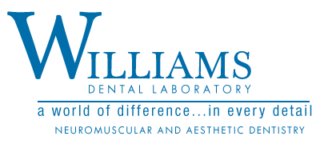No Adjustments
Whether you are delivering veneers, crowns, and even partial dentures it is possible to do with no adjustments.( or very little proximal and occlusal adjustment) At Williams Dental Lab, we adheres to a strict protocol of die handling, die spacing and a crucial model articulation technique to provide our clients with a “No Adjustment” crown seat appointment. No adjustment crown seat appointments are possible whether you are using digital impressions or traditional techniques. Modern technology has provided dental laboratories and clinicians with more predictability with the evolution of digital work flow. (3D printing and the milling process are dead on accurate when parameters are in order)
If a dental laboratory does not possess a strong understanding of the following:
- How to correctly mount stone models
- A firm grasp of cusp to fossa occlusion and anterior guidance
- How to properly equilibrate stone models and/or 3D printed models
- A complete understanding of solid model verification
If these 4 things aren’t done, then there will always be adjustments needed at the crown seat appointment.
Our Williams Dental Lab technicians understand that basic cusp to fossa occlusion occurs when cusp inclines on posterior teeth do not touch other posterior inclines. We understand that the cusp tips must hit static stops in central fossa. Our model equilibration process removes all incline interferences and allows cusp tips to occlude at 90 degree angles to opposing marginal ridges and central fossa. Anterior guidance allows complete freedom from maximum intercuspation and without the equilibration of mounted casts there will always be adjustments needed at crown seat appointments.
Less than 1% of dental laboratory technicians understand the “No Adjustment” technique much less why it is absolutely necessary for complete case success. Why have clinicians become comfortable and deem it to be “Normal” to adjust and adjust and adjust crowns at seat appointments. This takes the anatomy and luster out of the restoration, it takes up substantial chair time and isn’t it frustrating to pay for something that requires so much additional work to fit properly?
The following are common techniques used by dental laboratories that try to achieve “No Adjustment” crown seat appointments:
- Placing tin foil underneath the working die to create a space. The crown may be shy of occlusal contact when too much foil is used. This creates a problem when the tooth does erupt into occlusion it may grow into an incline interference, creating an avoidance pattern for the mandible.
- Pushing die up so the crown appears out of occlusion on the model. This creates the same issues as above.
The flaw with both techniques is that there is no way to gauge how much to leave the crown out of occlusion so it is correct in the mouth. These techniques can never be exactly correct and they both create problems for proximal contacts at the delivery appointment. This also creates an unstable situation because that tooth can now drift either mesially or distally creating possible occlusal interferences.
Here is why our clients do not have to adjust their restorations from Williams Dental Lab. We understand that the only way to have predictable adjustment free delivery appointments is to correctly equilibrate the accurately mounted working casts. This takes any trained technician approximately 5-6 minutes per case. This “No Adjustment” technique is used for all restorations and it goes as follows:
CENTRIC EQUILIBRATION
- Opposing and working models are both poured in liquid: powder ratio using properly measured die stone, or 3D printed models with our accurate parameters.(This is crucial)
- After mounting accurately, the mounting is verified. (Note to clinician: Bite should be taken with a polyvinyl bite material that can be trimmed to allow only cusp tips to show through. Please avoid base plate wax).
- Double sided,19-micron Exacta-film (articulating paper) is used for articulation. We use the black side for centric equilibration.
- We remove initial incline contacts. We do not ever remove cusp tips, only inclines. This should be done for intraoral equilibration as well.
a.) A black dot stable holding contact will be found in the fossa of adjacent teeth.
b.) There shouldn’t be any contacts found on inclines, only on cusp tips and fossa when follow this technique. These holding contacts are found on all teeth. Once we have achieved our centric articulating process we then proceed to the lateral equilibration process.LATERAL EQUILIBRATION
- There should be no change in vertical dimension of the equilibrated models in centric because this replicates a “power clinch” of all teeth. (Periodontal ligaments are fully depressed.)
a.) Using the red side of the articulating paper, we move models laterally and remove all red marks except those on canines, without removing black holding contacts on posterior teeth. The goal is to have black dots on all posterior teeth and red marks on the anterior teeth.
b.) At Williams Dental Laboratory we go one step further to absolutely ensure no posterior interferences. We know all healthy teeth intrude into their periodontal ligament and also move laterally. In this example, imagine the canine will move laterally 56 to 75 microns in a clinching lateral force.
We safely remove approximately 5 degrees off of canine disclusion to further “shallow” the guidance to ensure no posterior interferences. Posterior interferences must then be rechecked. The key is that lateral equilibration will not change the vertical dimension, only shallow the disclusion angle further ensuring no posterior interferences.
All of our highly trained technicians know that until our “No Adjustment” technique is completed the models are not an accurate portrayal of the mouth. This technique, along with the use of a solid proximal contact model and soft tissue model is employed on all lab cases at Williams Dental Lab. For more information about our “No Adjustment” techniques or to find out how to get started with Williams Dental Lab located in Gilroy, CA email bob@williamsdentallab.com. We feel that all doctors should have happy clients and not unhappy results.
